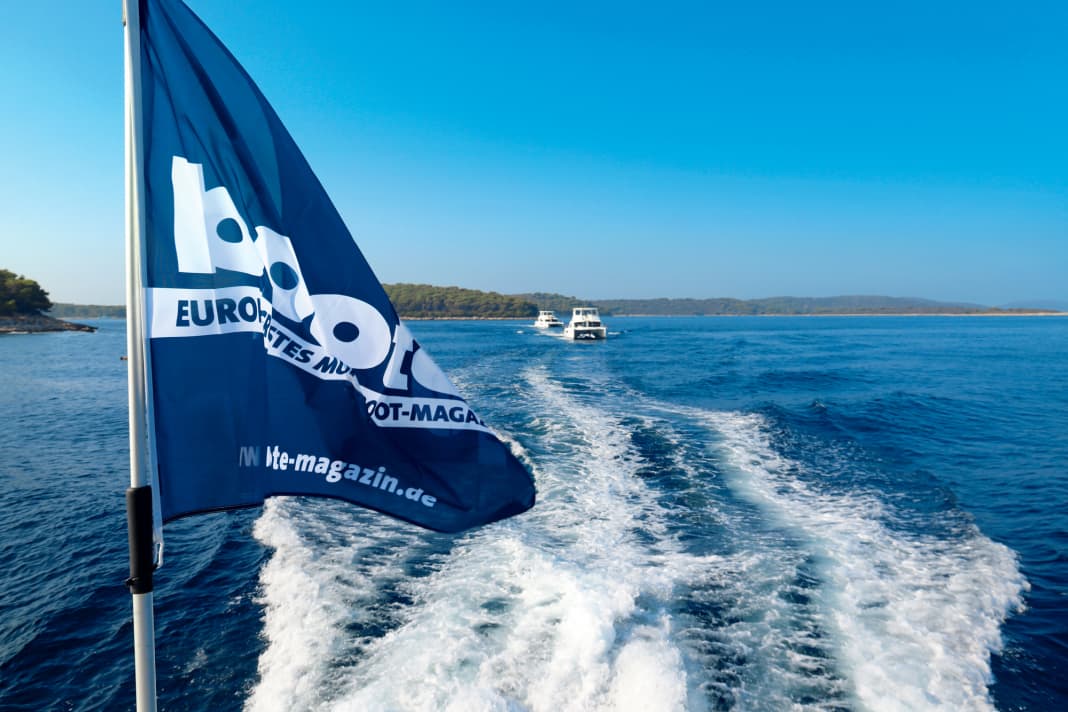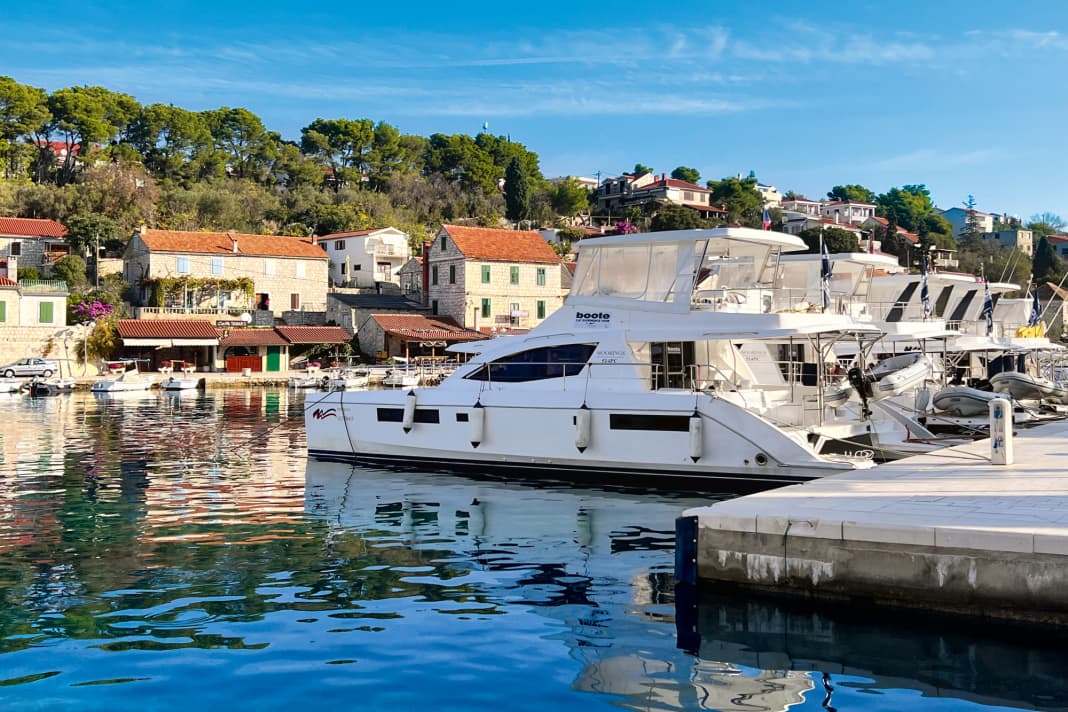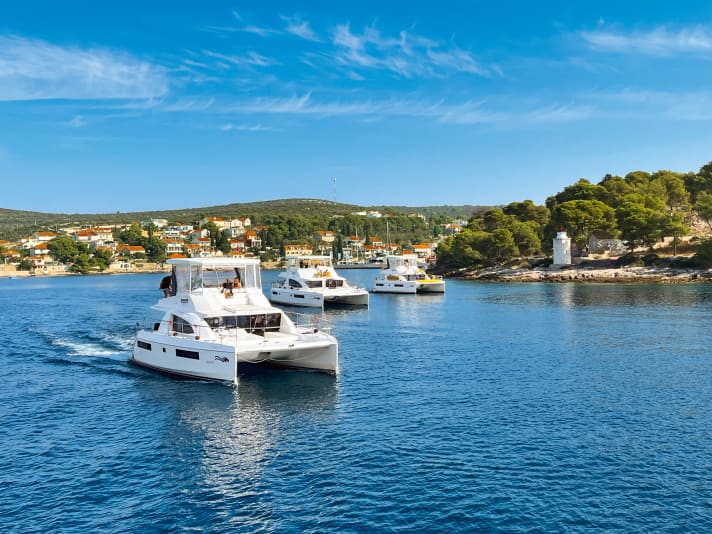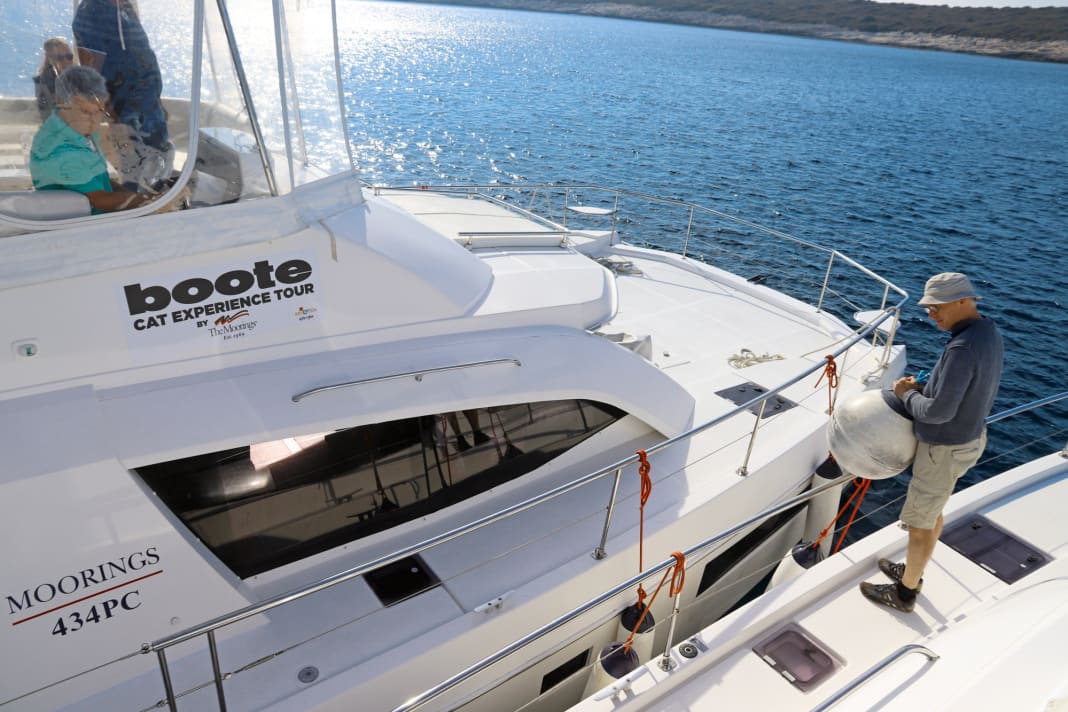





For many skippers, chartering is the easiest way to go on a boating holiday. The advantages are obvious: the choice of areas and boat types is huge and you don't have to worry about almost anything. The usual owner issues such as maintenance work, repairs, finding a berth or winter storage are foreign words for charterers. Disadvantage: You always have to get used to other boats and their sailing characteristics. It often takes several days to get to grips with the boat and its equipment. In the run-up to the holiday, there is therefore often a residual feeling of uncertainty as to what you will actually find on site and whether you will really be able to cope with the "new" boat.
Motorised catamarans in particular pose a particular challenge for many charter customers due to their sheer size alone. In addition to the size, it is also the unfamiliar handling characteristics that cause headaches, especially for beginners. This is exactly where the BOOTE-Cat-Experience comes in. The four-day practical training course on site is designed to provide confidence in handling the boats and thus boost the self-confidence and experience of future charter skippers. But what exactly does the BOOTE-Cat-Experience involve?
Day 1: Getting to know the crew, catamaran and sailing area
The first day is spent getting to know the crew, the boat and the sailing area. The crew of each boat generally consists of the BOOTE trainer and a maximum of six trainees, who live on board together throughout the training programme. With three to four Leopard-type training catamarans, this results in a maximum group size of 28 people on four boats. The fleet is accompanied by a "provider" from The Moorings team, who carries provisions and water toys such as SUPs, snorkelling equipment and kayaks. After the welcome, The Moorings team explains the special features and hotspots of the Central Dalmatian area, its islands and the local weather conditions. This is followed by a boat briefing, during which the instructors explain how to operate the boat and how to use the equipment correctly, such as the engine system, navigation electronics and anchoring gear.
First training sessions with the catamaran
The following morning, the first driving training sessions are on the agenda. The initial aim is to get to know the boats and their driving behaviour in various situations. Cornering on predefined slalom courses, turning "on the plate", precise stopping or reversing are the basic prerequisites for the subsequent first mooring manoeuvres in the harbour. Since in many charter areas the boat is moored "Roman Catholic", i.e. with the stern to the pier, this manoeuvre is one of the first and most important of the day. In addition to the skipper's sailing skills, the teamwork of the crew is also important here.



The fleet then leaves the charter base in the afternoon and sets off on its first sea leg. The boats are driven exclusively by the course participants, the trainers are only on hand to offer advice. Arriving at the destination harbour, Maslinica last year, in the late afternoon, the newly acquired knowledge is put into practice and the boats are moored one after the other at the harbour pier, stern first. Here, too, the rule is: anything goes, nothing must. Anyone who still feels unsure will be expertly guided through the manoeuvres by the instructors and the Moorings team. Afterwards, there is time to top up on fresh water or provisions and to explore the town or the surrounding area.

Day 3: Casting off and manoeuvre training
Day three starts with casting off the boats and subsequent manoeuvre training, such as anchoring, mooring to a mooring buoy or mooring alongside other boats. For this training, we look for a calm anchorage bay where we can practise bringing the dinghy into the water and handling it. Depending on the weather and sea conditions, we stay on site or look for a buoy field near a konoba (restaurant) for the night. There will then be enough time for swimming, snorkelling, SUP or kayaking.



Day 4: Refuelling with the catamaran
On the fourth day of training, we leave the islands and head for the nearest petrol station, as charter boats must always be returned with a full tank of fuel. Here, too, the knowledge and experience of the entire crew from the previous days comes into play. On the way back to base, each trainee has ample opportunity to try out the catamaran's navigation equipment, the autopilot function and "man overboard" manoeuvres. We then return to our charter base in the afternoon and meet for a joint manoeuvre critique on the aft deck.
Conclusion of the Cat Experience
To summarise, the BOOTE-Cat-Experience offers a mixture of learning and lifestyle that cannot be experienced anywhere else. This training has already brought together a number of crews who have been meeting up in different areas for years to go on holiday together on large catamarans and continue to build on their experience.
Further information: The next BOOTE-Cat-Experience in Marina Agana will take place from 10 to 14 October 2023. Anyone interested can find further information and booking options at www.moorings.de/yachtcharter/segeln-lernen/katamarantraining

